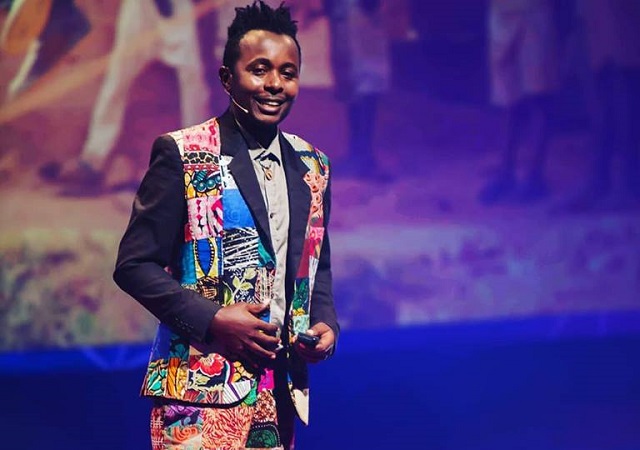
Kampala, Uganda | THE INDEPENDENT | Bruno Ruganzu explains the magnetism of artivism
Bruno Ruganzu has recently been shortlisted among the four finalists for Artivism in Residence artists by MS TCDC in Arusha, Tanzania for using art for social justice in Africa. The Independent’s Dominic Muwanguzi spoke to him. Below is an excerpt from the full length interview to be published in Art SouthAfrica.
What you do can be interpreted as activism. How important is activism in art?
It is my belief that artists have always been activists if you look back at first local artistes like Bobi Wine, then international musicians like artiste Fela-Kuti, Bob Marley, Miriam Makeba and Nina Simone. Through their music, they have held placards petitioning for political, social, or economic change in their own respective communities. As such, art is a powerful tool to change society because it is bred from freedom of expression. In recent times, because of the enormous participation of artists in activism and interest in want they do by the public, activism has evolved to become artivism.
Explain the recurring relationship between trash and children in your art?
I love children from both a sentimental and creative perspective. Children are naturally honest and easy to deal with in any situation. This is unlike adults who are very analytical without even questioning why. A child will always want to find out things, more like an artist who’s eager to experiment with whatever media they come across. On the other hand, trash is easy to work with because it’s immediately accessible and cheap. Of course, in Europe it can be a different scenario because some countries like Denmark have to import in garbage from neighbouring countries. What they have is not enough compared to the demand of recycling it into useful objects.
Unlike the west where you have traveled frequently, recycling is not well- embraced on the continent. How are eco-artists like you helping to create awareness on the subject with no funding from the government?
For starters, it is unfortunate that the government is not supporting the idea of recycling which is already a hot topic globally. The support should not necessarily mean fiscal funding, but can be through creation of community platforms starting from the household level where people are taught how to handle trash: separate the organic from the artificial refuse thereby creating a recycling value chain. Besides that shortfall, through our activities we have inspired several people; some artists, like Sandra Ssuubi and Arinaitwe Peter; who’re now pushing boundaries in this discipline. In many places in Kampala, people are collecting garbage and turning it into functional objects. This was not the case ten years ago where huge piles of trash filled the city streets and its outskirts. More so, through the diverse network I have created over the years as an eco-artist, I continue to receive commissions from private institutions like schools that want to work with me. This reflects the positive impact of our mission to create a clean environment.
Talk about the limitations on creating voluminous artwork by many indigenous artists. And why should they create such colossal art?
It is a norm that many local artists complain about material and finances as a barrier to not create voluminous artworks. This is rather unfortunate because to create such large scale art, you do not necessarily need money or exotic media they’re always looking for. A case in point is `The hand that Speaks’ sculpture I created from 20, 000 plastic bottles. Its size; measuring over 12ft, made it stand out. Similarly, Chinese artist Ai Weiwei recently sculpted a large installation composed of ten thousand life-jackets to respond to the subject of Mediterranean migration. As such, it is not about the media or finances but the mind set to do the unusual. Additionally, the colossal artwork has the advantage to be seen and is self-marketing. If you’re building a 20ft artwork, you will elicit everyone’s attention and it can be a ploy to break through.
 The Independent Uganda: You get the Truth we Pay the Price
The Independent Uganda: You get the Truth we Pay the Price



